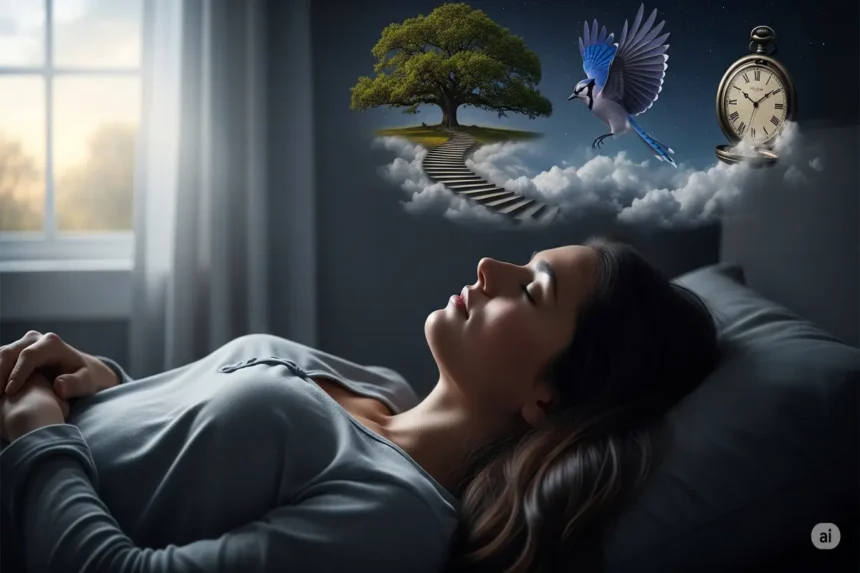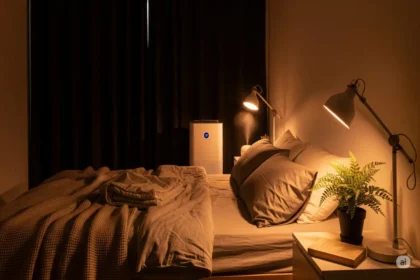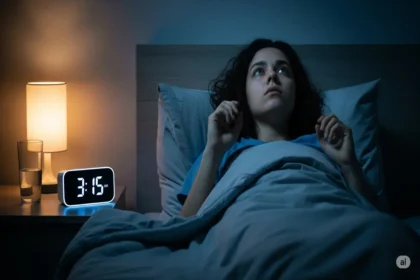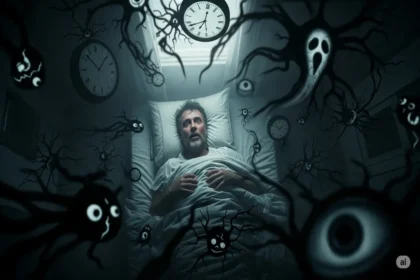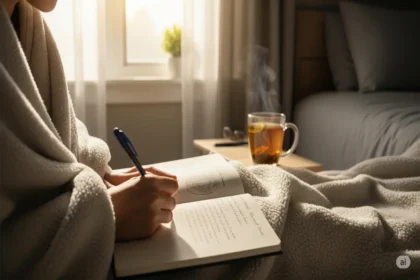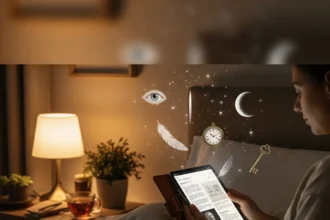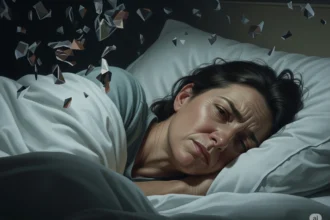Every night, as the world outside fades into slumber, a new universe unfurls within the confines of our minds. We drift into a realm populated by fleeting images, perplexing narratives, and intense emotions – the enigmatic landscape of dreams. For millennia, humanity has gazed upon this nightly theatre with a mixture of wonder and bewilderment, seeking to decipher its cryptic messages. From ancient shamans interpreting divine omens to modern psychoanalysts probing the subconscious, the question of why we dream has remained one of the most enduring mysteries of human existence. Yet, beyond the mystical and the metaphorical, science is steadily peeling back the layers of this fascinating phenomenon, revealing a profound evolutionary purpose woven into the very fabric of our sleep.
Imagine a primordial ancestor, huddled in a cave, vulnerable to the unseen dangers of the night. Their survival depended not just on their waking vigilance but perhaps also on a sophisticated internal mechanism that prepared them for the unpredictable. Could dreams be a vestige of this ancient survival toolkit, a nightly rehearsal for the challenges of life? Modern neuroscience suggests that our dreams are far from random neurological static; they are a complex symphony orchestrated by the brain, serving a multitude of vital functions that contribute to our emotional well-being, cognitive prowess, and even our very survival.
The Brain’s Night Shift: REM Sleep and Its Importance
To understand the purpose of dreaming, we must first journey into the architecture of sleep itself. Our sleep cycles are not a monolithic block of unconsciousness but a dynamic progression through distinct stages. The most vivid and memorable dreams typically occur during Rapid Eye Movement (REM) sleep, a paradoxical state where the brain is highly active, almost mirroring its waking state, while the body remains largely paralyzed. During REM, our eyes dart back and forth beneath closed eyelids, our heart rate and breathing become irregular, and our brains hum with electrical activity.
Neuroimaging studies, utilizing techniques like fMRI, have illuminated the specific brain regions that light up during REM sleep. The limbic system, a network associated with emotion and memory (including the amygdala and hippocampus), shows heightened activity. Conversely, the prefrontal cortex, responsible for logical reasoning, planning, and impulse control, is relatively suppressed. This unique neurological cocktail explains the often bizarre, illogical, and emotionally charged nature of our dreams. It’s as if the brain temporarily suspends its rational censor, allowing raw emotions and fragmented memories to intermingle freely, creating narratives that defy the rules of waking reality.
Emotional Alchemy: Dreaming as a Processing Plant
One of the most compelling scientific theories posits that dreams serve as a crucial mechanism for emotional regulation and processing. Think of a stressful day, filled with anxieties, conflicts, or profound joys. When we finally lie down to sleep, our brains don’t simply shut off these experiences. Instead, during REM sleep, the amygdala – the brain’s emotional hub – becomes highly active. It’s as though the brain is replaying and re-evaluating emotional experiences from the day, but in a safe, simulated environment.
Dr. Matthew Walker, a renowned sleep neuroscientist, eloquently describes REM sleep as “overnight therapy.” Without the presence of norepinephrine, a stress-related neurochemical that is largely absent during REM, the brain can process traumatic or emotionally charged memories without the accompanying physiological stress response. This allows us to integrate difficult experiences, dull their emotional edges, and learn from them without being overwhelmed. Consider someone grieving a loss; their dreams might be filled with interactions with the departed, allowing them to process their sorrow and gradually come to terms with their new reality. Or, after a particularly frustrating argument, a dream might replay the scenario, offering a different perspective or simply allowing the pent-up emotions to dissipate. This nightly emotional alchemy helps maintain our psychological equilibrium, preventing emotional overload and fostering mental resilience.
The Mind’s Librarian: Memory Consolidation and Learning
Beyond emotional processing, dreams play a critical role in memory consolidation and learning. During sleep, particularly REM sleep, the brain actively sorts, files, and strengthens memories acquired during waking hours. It’s like a diligent librarian organizing new books and integrating them into the existing collection. Studies have shown that individuals who get sufficient REM sleep perform better on memory tasks, especially those involving complex information or motor skills.
For instance, a classic experiment might involve teaching participants a new skill, like typing a complex sequence on a keyboard, and then testing their recall after a period of sleep or wakefulness. Those who slept generally show marked improvement, and brain imaging reveals that the neural pathways associated with that new skill are reactivated during their sleep. This isn’t just about rote memorization; it’s about integrating new knowledge into our existing cognitive frameworks, forming new connections, and making sense of the world. Dreams, in this context, are not just a byproduct of this process but an active participant, weaving new information into existing narratives and strengthening neural networks. This is why students often find that a good night’s sleep after studying is far more effective than an all-night cramming session.
The Creative Spark: Problem-Solving and Innovation
Have you ever woken up with a brilliant idea, a solution to a nagging problem, or a melody that seems to have materialized out of thin air? Dreams have long been a muse for artists, scientists, and innovators, and for good reason. The unique state of REM sleep, with its reduced logical constraints and heightened associative thinking, creates a fertile ground for creativity and problem-solving.
Without the rigid rules of waking consciousness, the dreaming brain can make novel connections between seemingly unrelated concepts, leading to “aha!” moments. The classic anecdote of August Kekulé discovering the ring structure of benzene after dreaming of a snake biting its own tail is a testament to this phenomenon. Similarly, the melody for Paul McCartney’s “Yesterday” famously came to him in a dream. While not every dream yields a groundbreaking discovery, the brain’s ability to freely combine elements and explore possibilities during sleep can certainly provide fresh perspectives on waking challenges. It’s a spontaneous brainstorming session, unburdened by self-criticism or conventional thinking.
Threat Simulation Theory: An Evolutionary Rehearsal
Perhaps one of the most intriguing evolutionary explanations for dreaming is the Threat Simulation Theory (TST), proposed by Finnish cognitive neuroscientist Antti Revonsuo. TST suggests that dreams evolved as a “safe space” for our ancestors to repeatedly simulate threatening events, thereby honing their fight-or-flight responses and improving their chances of survival in the face of real danger.
In this view, nightmares and anxiety dreams are not just psychological disturbances but a valuable training ground. Imagine our early human ancestors facing predators, rival tribes, or natural disasters. Dreaming about being chased, falling, or confronting an aggressor could have provided a low-stakes environment to practice escape strategies, assess risks, and refine emotional responses to fear. This nightly “rehearsal” could have conferred a significant evolutionary advantage, making individuals more adept at responding to real-world threats. While modern humans face different dangers, the underlying neural mechanisms for threat simulation may persist, manifesting as dreams about public speaking, failing exams, or being late for an important appointment – contemporary anxieties that still trigger our ancient survival instincts.
The Byproduct Hypothesis: A Counterpoint
It’s important to acknowledge that not all scientific theories attribute a direct functional purpose to every aspect of dreaming. The “byproduct hypothesis” suggests that dreams are merely the incidental result of the brain’s necessary physiological processes during sleep, such as memory consolidation or neural maintenance. In this view, the narrative content of dreams is essentially meaningless “noise” generated by a highly active brain that is simply doing its nightly work.
However, the growing body of research supporting the roles of dreams in emotional regulation, memory processing, and even problem-solving provides strong counterarguments to a purely byproduct view. While some aspects of dreams might indeed be random neural firings, the consistent patterns, emotional intensity, and often coherent (even if bizarre) narratives suggest a deeper, more organized purpose than mere neurological detritus. The brain is an incredibly efficient organ, and it’s unlikely to expend so much energy on a phenomenon with no adaptive value.
The Personal Narrative: Crafting Our Inner Story
Beyond the specific functions, dreams also contribute to our ongoing personal narrative, shaping our understanding of ourselves and our place in the world. They are a deeply personal form of storytelling, reflecting our hopes, fears, desires, and unresolved conflicts. Through dreams, we confront different facets of our personality, explore alternative realities, and integrate disparate experiences into a cohesive sense of self.
This continuous internal narrative-building is crucial for psychological health. It allows us to process complex life events, reconcile conflicting emotions, and even envision future possibilities. The symbols and metaphors in our dreams, while often enigmatic, can offer profound insights into our subconscious concerns, providing a unique window into our inner landscape.
A Continuing Enigma
The journey into the evolutionary purpose of our nightly narratives is far from complete. While science has made remarkable strides in demystifying the mechanics and many functions of dreaming, the sheer complexity and subjective nature of the experience ensure that it remains a fertile ground for exploration. Each night, as we close our eyes, we embark on a unique adventure, a testament to the brain’s incredible capacity for creation, processing, and adaptation.
Perhaps the true evolutionary purpose of dreams is not singular but multifaceted, a dynamic interplay of emotional processing, memory consolidation, creative incubation, and even ancient threat simulation. They are a testament to the brain’s remarkable ability to work tirelessly, even in slumber, to prepare us for the waking world, to heal our emotional wounds, and to continuously refine the intricate tapestry of our consciousness. So, the next time you wake from a particularly vivid dream, take a moment to reflect. You’ve just experienced a profound evolutionary legacy, a nightly narrative crafted by millennia of adaptation, designed to help you navigate the complexities of life, one dream at a time.
Disclaimer: The information provided in this article is for general informational purposes only and does not constitute medical advice. It is not a substitute for professional medical advice, diagnosis, or treatment. Always seek the advice of your physician or other qualified health provider with any questions you may have regarding a medical condition. Never disregard professional medical advice or delay in seeking it because of something you have read on this website.

